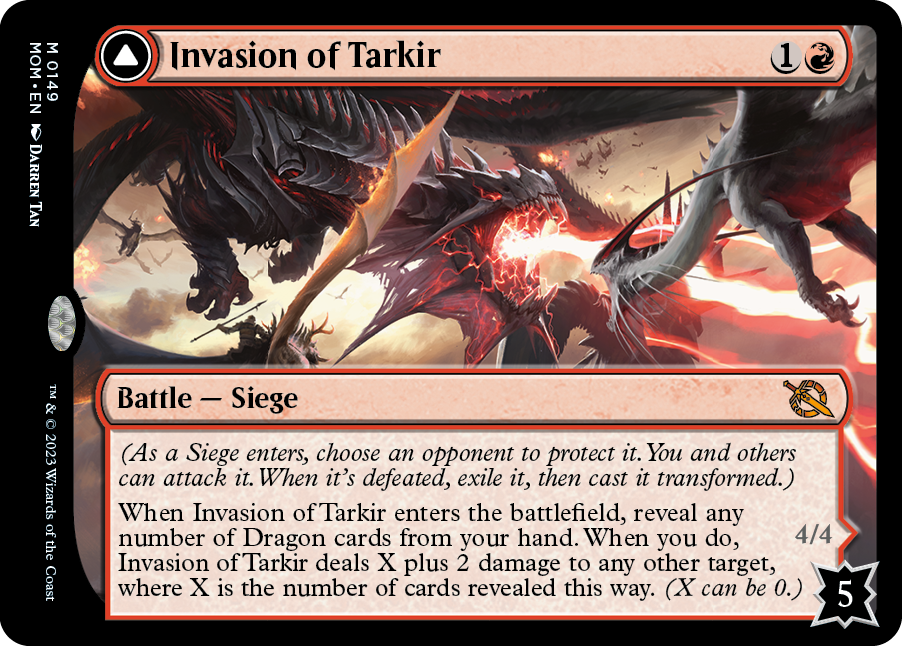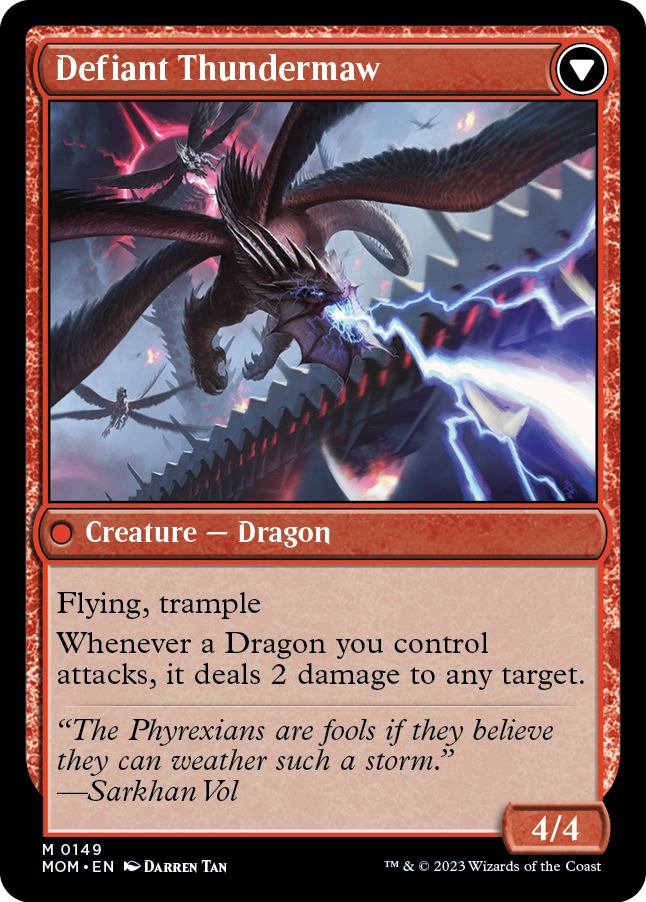Hello and welcome back to Metagame Mentor, your weekly guide to the top decks and latest Constructed developments on the path to the Pro Tour.
Today's article cover the U.S. Regional Championship, which was held at Dreamhack San Diego last weekend. We'll take a closer look at the winning decklist, at the Standard metagame breakdown and match win rates for all major archetypes, and the spiciest decks that earned a Pro Tour qualification.
Rakdos Reanimator Takes the Trophy
Congratulations to the #DHSAN23 Regional Champion, Joshua Willis with Rakdos Reanimator! 🏆 #DHMTG @PlayMTG pic.twitter.com/Vd9JsEQhuY
— DreamHack Magic (@DreamHackMagic) April 10, 2023
Congratulations to Joshua Willis! He qualified for the U.S. Regional Championship at an RCQ at Game Nerdz in Wylie, Texas and took down the 939-player tournament with Rakdos Reanimator. In the finals, he defeated Isaac Sears in a Rakdos Reanimator mirror match. It went the full three games, but Willis ultimately emerged victoriously, clinching the trophy and $30,000. Sears earned $15,000 for second place, but both finalists qualified for World Championship XXIX.
In addition, the top 48 players of the U.S. Regional Championship earned an invite to Pro Tour March of the Machine. You can find the Top 8 bracket, photos, and more on the coverage page, and you can find all decklists and Swiss standings on the MTG Melee page.
Both Rakdos Reanimator decks in the finals used
The Metagame and Win Rates
Based on all 939 decklists submitted to the U.S. Regional Championship, I determined the metagame share and the non-mirror, non-bye, non-draw match win rate for every archetype. I used my own algorithms and definitions to assign archetype labels, thereby fixing any potential mislabeling on MTG Melee. Let's take a look!
| Archetype | Percentage of Field | Match Win Rate |
|---|---|---|
| 1. Esper Legends | 18.4% | 54.0% ✓✓ |
| 2. Rakdos Midrange | 15.7% ↑↑ | 52.8% |
| 3. Mono-White Midrange | 13.1% | 50.4% |
| 4. Grixis Midrange | 10.0% ↓↓ | 49.8% |
| 5. Rakdos Reanimator | 7.5% ↑↑ | 51.5% |
| 6. Domain Control | 5.5% | 49.9% |
| 7. Selesnya Toxic | 3.6% ↓↓ | 49.6% |
| 8. Mono-Red Aggro | 3.1% ↓↓ | 44.6% |
| 9. Selesnya Enchantments | 2.6% ↑↑ | 49.8% |
| 10. Grixis Reanimator | 2.1% | 34.7% |
| 11. Azorius Soldiers | 2.1% | 47.5% |
| 12. Jund Midrange | 1.5% | 39.3% |
| 13. Mono-Blue Tempo | 1.4% | 50.0% |
| 14. Orzhov Midrange | 1.3% | 49.4% |
| 15. Rakdos Aggro | 1.2% | 46.6% |
| 16. Four-Color Legends | 1.0% | 40.0% |
| 17. Jund Reanimator | 1.0% | 46.3% |
| 18. Jeskai Control | 1.0% | 55.7% |
| 19. Other | 8.0% | 42.5% |
In this table, each archetype name hyperlinks to a well-performing decklist close to the aggregate of that archetype, and the arrows represent the biggest changes compared to the Regional Championships in Mexico, China, and East Canada. The "other" category, continuing the descending order, included such deck archetypes as Rakdos Sacrifice, Mono-Black Midrange, Mardu Midrange, Esper Midrange, Esper Control, Boros Midrange, RataBlade Combo, Mono-Red Powerstones, Poison Ivy, Gruul Modified, Orzhov Aggro, Azorius Control, Mono-White Aggro, Gruul Powerstones, Bant Toxic, Bant Enchantments, Dimir Midrange, Cleric Reanimator, Azorius Midrange, Jund Sacrifice, Boros Equipment, and more.
The metagame at the U.S. Regional Championship, the last of the cycle, saw the culmination of two main trends from the Regional Championship season.
The first trend was the steady rise of Esper Legends. The archetype was around 7% of the field across the first seven Regional Championships, then surged to around 14% at the next four, and ended at over 18% of the field in San Diego. This past weekend, Esper Legends was the most popular choice overall, and it even had the highest win rate among all heavily-played archetypes.
The second trend was the move from Grixis Midrange towards Rakdos Midrange. Across the first seven Regional Championships, Grixis Midrange was around 28% of the field, while Rakdos Midrange was a measly 1%. However, as more and more players adopted cards like
The Spice Corner
Besides the well-known top-tier decks, several off-meta options found success as well, showing that the depths of Standard have not been fully explored yet. Let's take a closer look at four innovative brews that earned a Pro Tour invite last weekend.
This deck, which revolves around the interaction between
The RataBlade combo, which uses the legend rule to melt your brain, is not for the faint of heart. The key piece of the combo is
The second important combo piece is
But it gets better!
When you add
This mind-blowing combo is wrapped in a typical Grixis Midrange shell with staples like
Dan Milechman finished 42nd at the U.S. Regional Championship with Gruul Modified, earning an invite to Pro Tour March of the Machine. Milechman's Gruul deck combines the aggression of hasty red creatures with the power of enormous green monsters. For example, the curve of
Compared to Mono-Red Aggro, the downside of Gruul Modified is that you lose out on
At my Regional Championship in Europe, I came close to registering a similar Gruul Modified deck. My build used
We haven't seen many
Compared to Rakdos Sacrifice decks that I had seen previously, their build does not overemphasize sacrifice synergies. They didn't go all-in with cards like
With their success, Debevoise and Jakobovits proved that Rakdos Sacrifice is still the real deal. For Rakdos players, it offers yet another alternative to Midrange or Reanimator builds.
Selesnya Enchantments emerged two weeks ago at the East Canada Regional Championship, where it stormed the tournament with an excellent win rate. This past weekend at the U.S. Regional Championship, the archetype had surged to 2.6% of the field, indicating that it has the power to compete with all the midrange decks at the top tables.
Selesnya Enchantments can outscale creature decks with
Among Selesnya Enchantments players, the highest finish at the U.S. Regional Championship was by Sam Bogue, in 49th place. Although only 48 invites to Pro Tour March of the Machine are awarded, Top 8 competitor Rei Zhang already had an invite due to their performance at Pro Tour Phyrexia, which means that the slot passes down to Bogue.
Looking Ahead
Standard has not been stale, and the upcoming influx of cards from March of the Machine, which introduces the brand-new battle card type, will shake things up further. I look forward to play with them for the first time at this weekend's prerelease, but my first impression is that they are awesome from the perspective of mana advantage, even in Constructed.
Take Invasion of Tarkir, for example. Suppose I value two life at one mana; that's the exchange seen in Phyrexian mana, and it's the difference between
After the tabletop release of March of the Machine, in roughly one week from now, the next Regional Championship Qualifier season will start as well. Ranging from April 22 through August 20, this season introduces format matching, which means that in-store RCQs are required to be either Pioneer or Limited, and they will qualify for a Pioneer Regional Championship later in the year.
And in roughly three weeks from now, Pro Tour March of the Machine will kick off at MagicCon: Minneapolis on May 5-7, featuring Standard and March of the Machine draft! But there's plenty to do at the MagicCon besides the Pro Tour. The tournament schedule features Pro Tour Qualifiers, the Secret Lair Showdown, and many other fun events, and pre-registration is open now.


